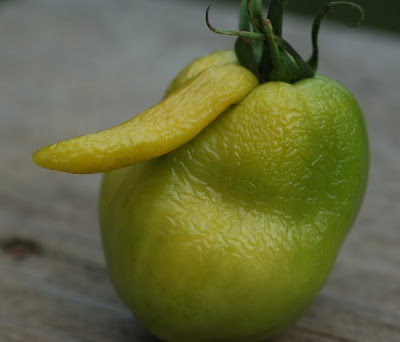I have mixed feelings when I read snide articles like Greed In the Name Of Green--To Worshipers of Consumption: Spending Won't Save the Earth by Monica Hesse, Washington Post, March 5, 2008. On the one hand, she is pointing out a real contradiction in pro-environmental advertising. It would be less wasteful of resources if we all bought less stuff, but the whole point of advertising, and of offering things for sale in general, is to sell more stuff. Hesse, like most critics of the "environmentally correct" movement, seems to say there's little point in becoming more mindful of waste, excess, and poor practices.
But, but, but--buying green feels so guilt-less, akin to the mentality that results in eating 14 of Whole Foods' two-bite cupcakes. Their first ingredient is cane sugar, but in a land of high-fructose panic, that's practically a health food, right? Have another.
"There's a certain thrill, that you get to go out and replace everything," says Leslie Garrett, author of "The Virtuous Consumer," a green shopping guide. "New bamboo T-shirts, new hemp curtains."
....Chip Giller, editor of enviro-blog Grist.org, has a less fatalistic view. He loves that Wal-Mart has developed an organic line. He applauds the efforts of the green consumer. "Two years ago, who would have thought we'd be in a place where terms like locavore and carbon footprint were household terms?" he says, viewing green consumption as a "gateway" to get more people involved in environmental issues. The important thing is for people to keep walking through the gate, toward the land of reduced air travel, energy-efficient homes and much less stuff: "We're not going to buy our way out of this."
This article was accompanied by an on-line discussion with one of the quoted authors:
Leslie Garrett...was online Wednesday, March 5, at 1 p..m. ET....Hello! Leslie Garrett here, author of The Virtuous Consumer: Your Essential Shopping Guide for a Better, Kinder, Healthier World (and one our kids will thank us for!). World's longest title, I know...Happy to answer questions!
Much of that discussion involves weighing which practices are more "virtuous," and how other people perceive one's behavior. This always makes me uncomfortable. "Paper or plastic?" is more effectively decided as a practical rather than a moral choice. (Around here, it's not a choice. Just try and find a brown paper bag to make school book covers in Pocahontas County!) Developing a new reason to look down on other people and feel self-satisfied seems counterproductive, too, but judging your neighbor based on carbon footprints and recycling efforts seems inevitable in these discussions.
This is the tone that deters me from following blogs and news websites about "green living," voluntary simplicity, and frugal practices. I'm interested in these topics, and would no doubt benefit from other people's insights, but the carping and cavilling eventually leads me to hit the "unsubscribe" button. Perhaps it's inevitable that giving up consumerist practices and possessions just makes us a bit cranky.



















